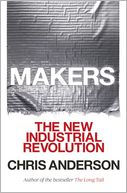Here are our top picks for the best leadership and business growth books this month.

Are there tried and true principles that are always certain to help a person grow? John Maxwell says the answer is yes. He has been passionate about personal development for over fifty years, and for the first time, he teaches everything he has gleaned about what it takes to reach our potential. In the way that only he can communicate, John teaches . . .
The Law of the Mirror: You Must See Value in Yourself to Add Value to Yourself
The Law of Awareness: You Must Know Yourself to Grow Yourself
The Law of Modeling: It’s Hard to Improve When You Have No One But Yourself to Follow
The Law of the Rubber Band: Growth Stops When You Lose the Tension Between Where You are and Where You Could Be
The Law of Contribution: Developing Yourself Enables You to Develop Others
This third and final book in John Maxwell’s Laws series (following 2-million seller The 21 Irrefutable Laws of Leadership and The 17 Indisputable Laws of Teamwork) will help you become a lifelong learner whose potential keeps increasing and never gets “used up.”

Wired magazine editor and bestselling author Chris Anderson takes you to the front lines of a new industrial revolution as today’s entrepreneurs, using open source design and 3-D printing, bring manufacturing to the desktop. In an age of custom-fabricated, do-it-yourself product design and creation, the collective potential of a million garage tinkerers and enthusiasts is about to be unleashed, driving a resurgence of American manufacturing. A generation of “Makers” using the Web’s innovation model will help drive the next big wave in the global economy, as the new technologies of digital design and rapid prototyping gives everyone the power to invent — creating “the long tail of things”.

“After reading only one of the chapter headings of The Wisdom of Failure—’Does This Doorframe Make My Head Look Big?’—I knew I was in for a real treat. Luckily for me, the rest of the book does not disappoint. Through their analysis of many pointed leadership examples in American business, the authors distill corporate lessons into pearls of wisdom from which all of us can learn.”
—Marshall Goldsmith, New York Times bestselling author, MOJO and What Got You Here Won’t Get You There
“A definitive piece of work that makes a most compelling connection between understanding failure and experiencing success. A must-read for serious-minded leaders who want to take their businesses to higher ground in an enduring way.”
—Douglas R. Conant, former president, CEO, and director, Campbell Soup Company; New York Times bestselling author, Touchpoints
“In this important new book from Weinzimmer and McConoughey, we discover how true it is, that the best leaders are the best learners. The Wisdom of Failure is a rare, honest look at both sides of the leadership story. Solidly researched and filled with practical examples you can apply immediately, this book should be read by leaders across the board.”
—Jim Kouzes, Dean’s Executive Fellow of Leadership, Leavey School of Business, Santa Clara University; bestselling coauthor, The Leadership Challenge
“All great leaders learn from their mistakes, but mistakes are a precious and costly resource. This provocative and thoughtful book allows you to learn from others’ mistakes, so you can learn without paying the price. Buy copies for everyone on your team and leverage these lessons on your journey to creating extraordinary results.”
—Saj-nicole Joni, confidential CEO advisor; bestselling author, The Right Fight

In The Trust Edge, David Horsager reveals the foundation of genuine success—trust. Based on research but made practical for today’s leader, The Trust Edge shows that trust is quantifiable and brings dramatic results to businesses and leaders. In this book, Horsager teaches readers how to build the 8 Pillars of Trust:
1. Clarity: People trust the clear and mistrust the ambiguous.
2. Compassion: People put faith in those who care beyond themselves.
3. Character: People notice those who do what is right over what is easy.
4. Competency: People have confidence in those who stay fresh, relevant, and capable.
5. Commitment: People believe in those who stand through adversity.
6. Connection: People want to follow, buy from, and be around friends.
7. Contribution: People immediately respond to results.
8. Consistency: People love to see the little things done consistently.
When leaders learn how to implement these pillars, they enjoy better relationships, reputations, retention, revenue, and results. Fascinating and timely, The Trust Edge unveils how trust has the ability to accelerate or destroy any business, organization, or relationship. The lower the trust, the more time everything takes, the more everything costs, and the lower the loyalty of everyone involved. Conversely, an environment of trust leads to greater innovation, morale, and productivity. The trusted leader is followed. From the trusted salesperson, people will buy. For the trusted brand, people will pay more, come back, and tell others. Trust, not money, is the currency of business and life!

Front-line employees can be your greatest asset-here’s how to tap their rich vein of insight and leadership.
Front-line employees who deal directly with customers are the face of any organization. Not only do they have the most impact on how a brand is perceived, but they are also the most valuable source of insight into what customers want and how to give it to them.
Unfortunately, as management experts Chris DeRose and Noel M. Tichy explain, most organizations don’t know how to evaluate the risk of giving employees more autonomy. Many of those who are willing to try haven’t even invested resources in ensuring that-once the shackles are off-front-line employees make good judgments.
Tichy and DeRose offer powerful examples of front-line leadership, such as:
How Zappos trusts its people to do anything in service of a customer, including providing free product or reimbursing for mistakes
How Mayo Clinic of Arizona enabled its nurses to challenge the hierarchy in order to improve patient care
Comments